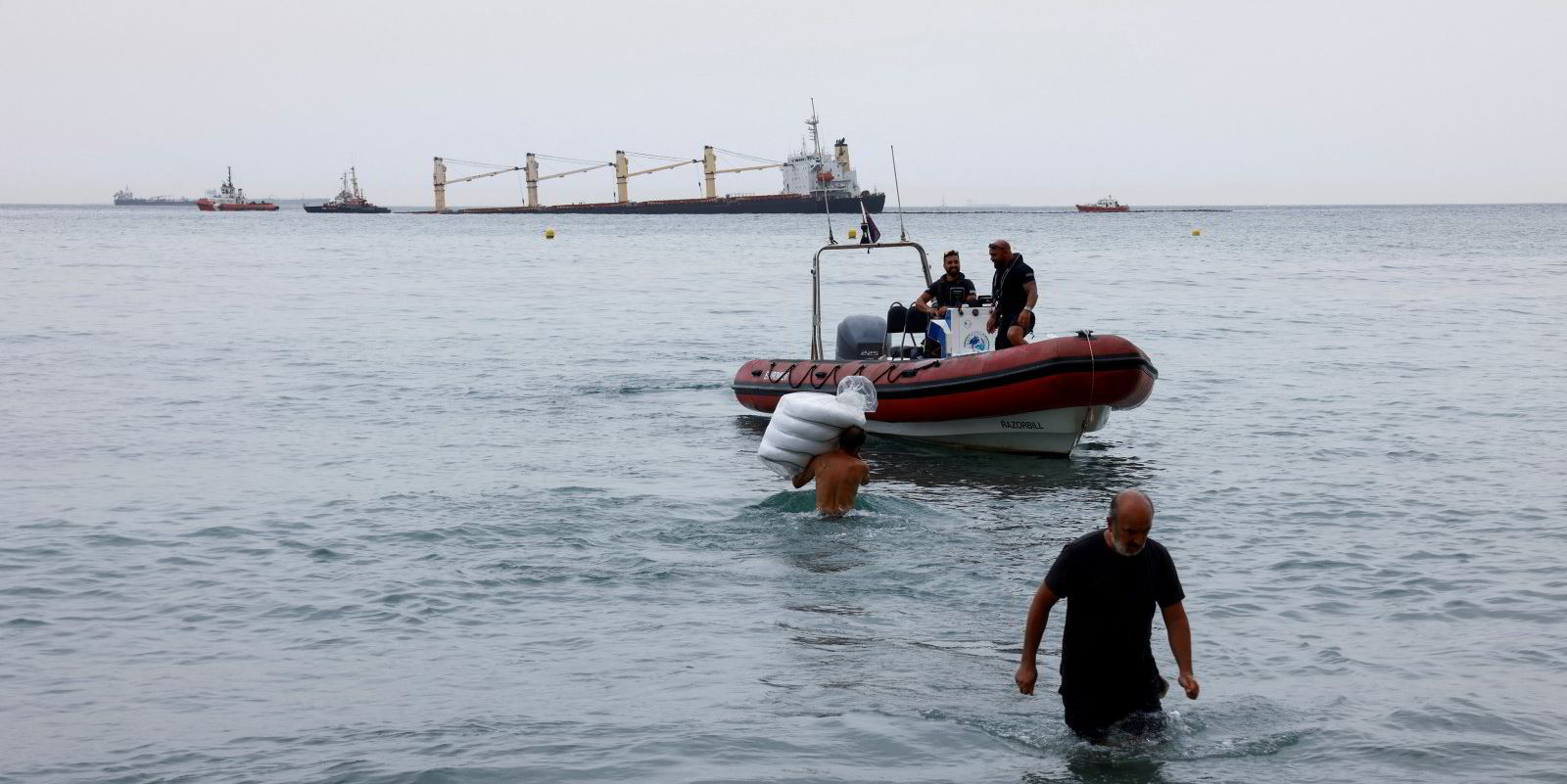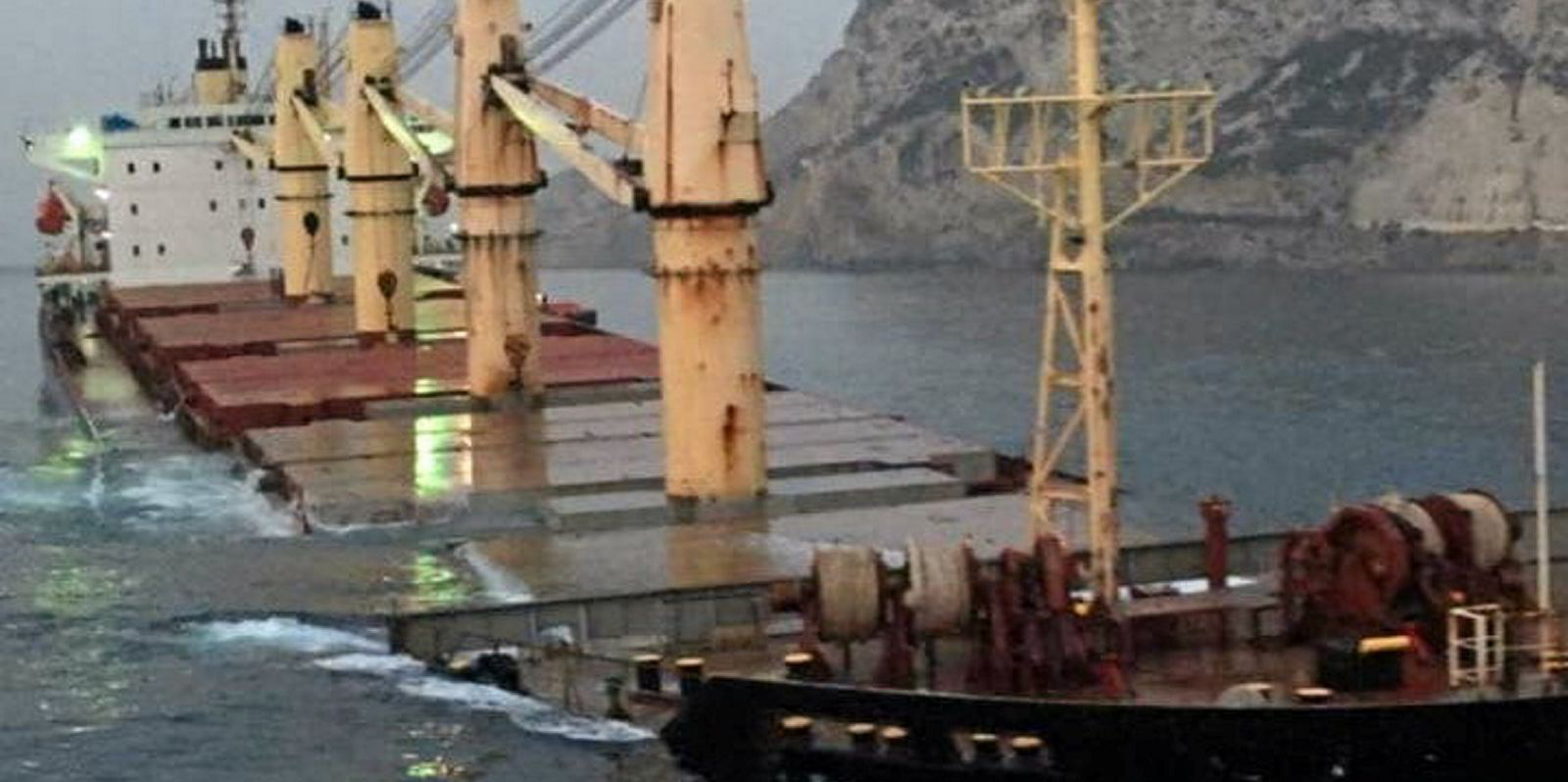The hull of a bulk carrier that grounded off Gibraltar after a collision has ruptured throwing salvage plans into chaos.
A notification from the Government of Gibraltar indicated the hull of the 32,362-dwt OS 35 (built 1999) has broken but has not yet “fully separated”. No oil has leaked out of the vessel, the government said.
The notification did not indicate where in the hull the break occurred.
The government note said pollution prevention equipment is in place to contain any spill which may result from the latest development.
“The OS 35 is already surrounded by an ocean boom that should contain any oil spill which may occur. No spill appears to have occurred. This is being constantly monitored,” the statement said.
The OS 35 was loaded with 183 tonnes of heavy fuel oil, 250 tonnes of diesel and 27 tonnes of lube oil when it grounded.
Plans were in place to remove fuel oil from the bulker before a refloating was attempted.
However, as TradeWinds earlier reported, salvors were in a race against time to rescue the ship. Shear forces acting on the hull were well in excess of the maximum limit, raising fears it could break in two.
The Gibraltar Contingency Council, which was set up to manage the operation, is now reassessing its salvage plans with the ship’s protection and indemnity insurer.
The ship’s protection and indemnity cover is placed with fixed-premium insurer British Marine, which declined to comment on the casualty.

Deliberately grounded
US salvage company Resolve Marine was awarded the initial emergency response Lloyd’s Open Forum salvage contract.
The grounding occurred on Monday when the OS 35 hit the 162,000-cbm LNG carrier Adam LNG (built 2014), which was at anchor, as it left Gibraltar. Pilots deliberately grounded the bulker to prevent it sinking.
The bow of the OS 35 is submerged 1.2 metres into a sandy seabed.
Divers earlier discovered that the OS 35 hull has already suffered substantial damage after the grounding, including a gash amidships below the waterline, about 10 metres by four metres.




